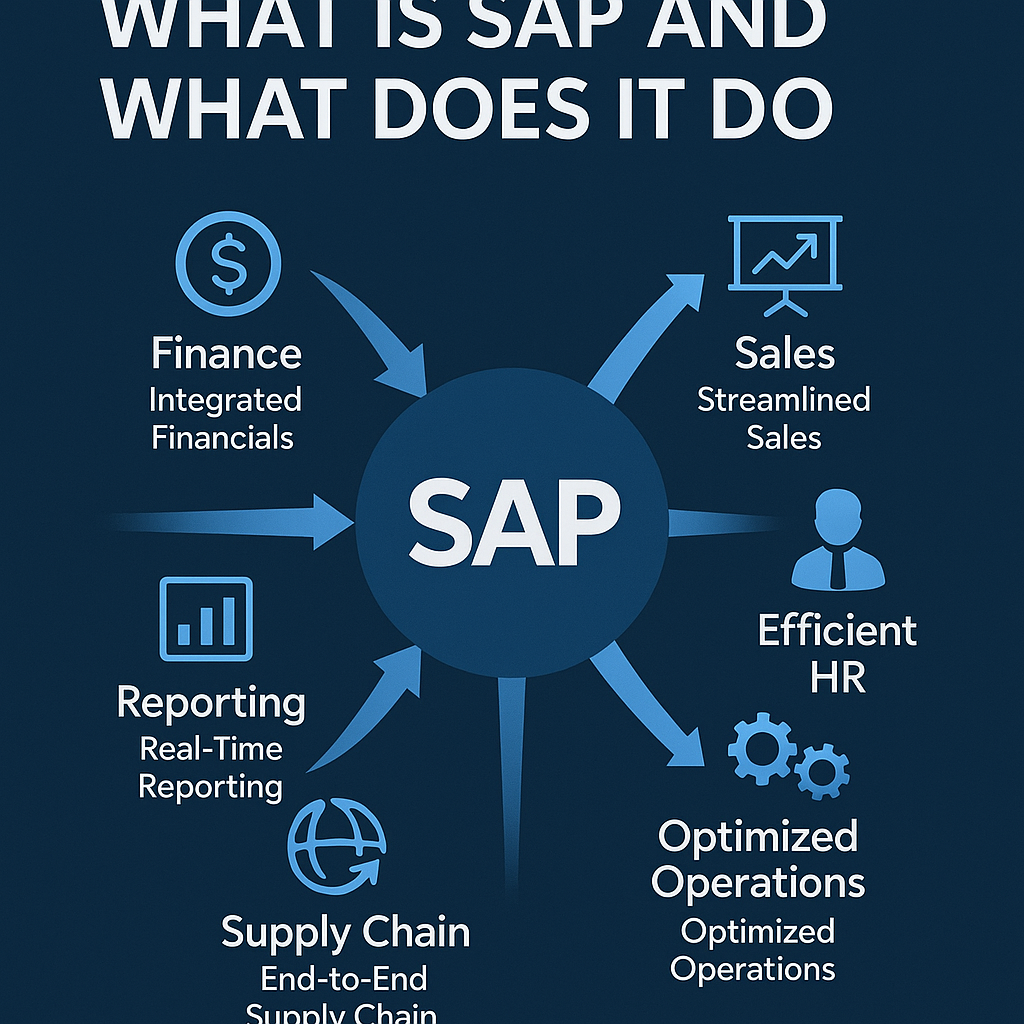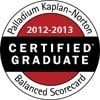Every major SAP implementation pushes your organization, your budget, and your leadership to new limits. But what if these challenges signal the building of something extraordinary? True SAP implementation success is forged in discipline and resilience—not convenience—and transforms your business into a more agile, data-driven, and profitable enterprise.

At SAP BW Consulting, we have helped industry leaders unlock results well beyond go-live dates. Read on to learn actionable strategies, real-world case studies, and proven frameworks that will help you drive business value and set your SAP project up for long-term success.
Need Strategic Level Advice on getting maximum value from your SAP System. Then get our CEO's Guide to SAP
Why SAP Implementations Feel Painful
So, why do these projects always hurt? It's because an SAP project is more than a simple software installation. An Enterprise Resource Planning (ERP) system is a complete overhaul of how your business operates from the ground up, impacting everything from human resources to supply chain management.
You are connecting departments that may have never truly worked together before, creating a single source of truth for your data. This creates a massive scope that touches every part of your organization. It is a monumental task and a huge, cross-functional undertaking that forces everyone to think differently about how their processes work.
Then you have the practical struggles of any ERP implementation project. Moving mountains of data from multiple legacy systems is never clean and presents significant data management challenges. Getting your team members to adopt new processes is a challenge in itself, often met with resistance, which can hinder user acceptance.
Defining SAP Implementation Success with Business Goals and Financial Metrics
Your team hitting the go-live date is not the finish line. True SAP implementation success is measured by the real business value you create long after the core implementation is complete. This means your project's goals must be tied directly to financial outcomes and a solid return on investment.
Before the implementation process begins, every item on your list of business requirements should answer a simple question: how will this make our business better? Whether it's improving supply chain management, streamlining cash management, or enhancing asset management, each goal needs a number. Calculating your projected ROI helps keep the implementation project on track.
You have to maintain clear Key Performance Indicators (KPIs) that everyone from the project teams to the executive suite can see. This visibility keeps the project honest and accountable. It also helps project success by making sure every decision serves the bigger profit-driven business strategy, not just the technology itself.
Pro-Tip: Always tie every project goal to a measurable financial or operational KPI. This ensures accountability across teams and provides leadership with clear visibility into ROI from day one.
Case Study 1: COSTCO Spain Builds from the Ground Up
Sometimes starting with a blank slate is a huge advantage. When I worked with COSTCO to manage their ERP project in Spain, they had no existing stores on the European continent. This meant we didn't have to waste time modeling old, inefficient processes from disparate data sources.
We could use SAP's standard out-of-the-box Best Practices for retail, a key part of our implementation planning. This approach helped us move very quickly, but it also forced foundational design decisions at a rapid pace. This was a classic case study of a fast-paced sap implementation (about four and half months from zero to Go-Live).
A couple of areas proved challenging, and the implementation team had to address issues promptly. First, we had to define handling units. This involved figuring out how many items go in a box, how many boxes fit in a case, and how many cases get loaded onto a pallet. The standard SAP functionality was there, but the high-quality, real-time data to make it work simply wasn't available yet, which highlighted a data accuracy problem.
Another hurdle was membership management, which is critical to COSTCO's business model and their customer relationship management. This process involved a custom sales flow for memberships and a procurement process for creating photo ID badges. We had to make SAP's Customer Relationship (CR) module talk to their corporate printers, which required finding the right drivers and understanding the little-known SAP content server. The professional services team cracked it, and the system became a core part of their operations.
Case Study 2: Saudi Arabian Airlines Turns a Failing Project Around
Project recoveries are a different kind of pain. I was assigned to the steering committee for Saudi Arabian Airlines after their ERP implementation was already in deep trouble. It was a large, difficult project involving the SAP IS-Airline Solution and Maintenance, Repair, and Overhaul (MRO) systems.
The implementation project was stuck because the team believed thousands of custom developments were needed. This felt wrong to me. Why build something from scratch if the ERP software can already do it? After all, developers love to develop, but that is not always the best path forward for a successful ERP implementation.
I went back to the original contract and software license proposal. I discovered that the needed functionality was available in other standard SAP modules like service management and capital management and industry solution license packs. The problem was, those modules had not been licensed, even though the original deal was supposed to include everything they needed. Once we identified the missing licensed software, I persuaded SAP to include it, which showed the value of having a good implementation partner. This move drastically cut development costs, improved the project timeline, and got everything back on track. Today, they are a reference customer.
How to Make Your SAP Pain Pay Off
You do not have to reinvent the wheel for every ERP implementation. SAP provides frameworks to guide you from initial pain to long-term gain, leading to numerous benefits. One of these is the SAP Continuous Business Improvement (SAP CBI) methodology. This approach helps you constantly find ways to get more value from your resource planning system post-launch.
Modern tools like SAP Signavio give you powerful insights into your business processes. You can see how things are working today and model how they could work better tomorrow. This lets you make adjustments based on data, not guesswork, as you face evolving circumstances.
Your SAP roadmap should also be a living document, not something you create once and forget. It must align with your corporate strategy and be updated yearly. A simple audit of your existing licenses might reveal powerful capabilities, like those for human capital management, that you already own but are not using. This is a common oversight with an easy fix.
The table below outlines common challenges in SAP implementations and strategic approaches to overcome them.
| Common Challenge | Strategic Solution | Key Outcome |
|---|---|---|
| Poor Data Quality from Legacy Systems | Implement a rigorous data management and migration strategy. Conduct a pilot test before the full migration to identify issues. | Improved data accuracy and user trust in the new system. |
| Resistance to Change & Low User Acceptance | Involve key stakeholders and end-users early in the implementation process. Provide comprehensive training and a strong support team. | Smoother transition and higher adoption rates. |
| Scope Creep & Over-customization | Adhere to a strict project management discipline. Prioritize standard SAP functionality over custom code. | Reduced complexity, lower long-term costs, and fewer time constraints. |
| Lack of Clear Business Goals | Define specific, measurable Key Performance Indicators (KPIs) before the project begins. Tie every function to a business outcome. | Achieves a clear ROI and contributes to ERP project success. |
Pro-Tip: Pilot your data migration on a limited dataset before system-wide rollout. Early pilot testing exposes hidden quality issues and builds trust in the new SAP environment—making final migration smoother for everyone.
Lessons from 27 Years of SAP Experience

After being involved in over 200 SAP projects, I have seen what separates successful ERP implementations from stalled ones. The lessons are surprisingly consistent. They are less about the technology and more about business discipline and vision.
Define a Clear Business Case First
Don't start implementing ERP without knowing the "why." What specific business problem are you trying to solve, and what is the expected financial impact? This SAP business case is your project's north star, guiding every decision made by key stakeholders and team members.
Keep the End Goal in Sight
When you are bogged down in technical details, it is easy to lose focus on the bigger picture. The hours, week-after-week, can be draining on even a strong team. Remind your team of the business vision constantly to maintain momentum and morale.
Have a Roadmap from Day One
Your SAP roadmap is your strategic plan for the enterprise resource technology. It should map directly to your CEO's vision for the company and be revisited every single year. A clear roadmap helps develop consensus and directs the efforts of all project teams.
Benchmark Against the Best
See how other leaders in your industry use SAP to manage their core functions. Their successes and failures can teach you a lot and help you avoid common pitfalls. This is one of the essential steps for a complete implementation.
Retire Custom Code
Whenever possible, use standard SAP modules instead of custom development. This is a critical step for long-term sustainability. It shifts the maintenance burden to SAP and reduces your technical complexity, freeing up your internal IT staff.
Combine Industry Solutions
SAP offers specialized solutions for different industries, covering everything from supply chain management to human capital. You can and should combine these management systems to meet your specific operational needs without extensive customization. A good consultant can show you how different modules can work together.
Leverage SAP Integration as an Advantage
The true power of SAP lies in its integration, providing real-time data across the organization. When finance, sales, and supply chain all run on one platform, you get a level of insight and efficiency that standalone systems can never offer. You just need the right SAP Implementation Consulting Services to help.
Pro-Tip: Audit your current SAP licenses annually. Many organizations miss out on valuable standard capabilities they already own, leading to unnecessary customizations and costs. Regular reviews uncover opportunities for quick wins.
Recognize Your Team's Knowledge Gaps
Your internal team is great at what they do, but they probably do not know everything SAP has to offer. Bring in experts who can show you what is possible with the standard software you already own. A fresh perspective from an outside expert can identify opportunities that have been overlooked for years.
The CEO Takeaway: Pain Is Just Proof You're Building Value
The best SAP projects hurt a little bit because they change everything for the better. This temporary pain is the sign of a deep, structural transformation that is building lasting business value. The friction you feel is your organization getting stronger and more aligned.
It is proof that you are shedding old habits and building streamlined processes that will serve you for years to come. Staying the course through this difficult phase is what produces long-term financial and operational gains. That is how successful ERP is achieved.
If you're not sure how much value you are getting, it might be time to take a step back. Commissioning an SAP Value Realization Review or a Roadmap Assessment can give you a clear picture of your current state. It helps you see what's working and identify new opportunities to measure your performance indicators and drive more growth.
Conclusion
The journey through a SAP implementation is demanding, but it should not be a blind march. The pain of change is real, but it is also productive when guided by a clear business case and strong leadership. The stories of COSTCO and Saudi Arabian Airlines show that with the right approach, even the most difficult projects can yield incredible results.
By focusing on business goals, using standard functionality, and keeping your strategic vision front and center, you can make sure your investment pays off. That is how you achieve sustainable SAP implementation success. You will see the numerous benefits for your business for years to come.
Get a SAP Value Realization Roadmap.
A SAP Value Realization Roadmap is an executive-level strategic plan designed to ensure your organization extracts the full measurable business value from its SAP investment—well beyond initial go-live.
This roadmap aligns technology capabilities with clearly defined business objectives, laying out the key milestones, accountabilities, and performance indicators required to drive continuous improvement and maximize ROI.

For CEOs, developing a SAP Value Realization Roadmap is critical: it transforms SAP from a cost center into a growth engine by systematically connecting digital transformation to tangible financial outcomes, stakeholder alignment, ongoing innovation, and long-term competitive advantage.
We are a SAP implementation and support partner. We can implement SAP in your business from 'greenfield' all the way to performing global roll-outs. With our deep Industry Expertise, we can help you uncover hidden value within your SAP system and drive your business to levels of profitability. Please our book a meeting service to get started.





